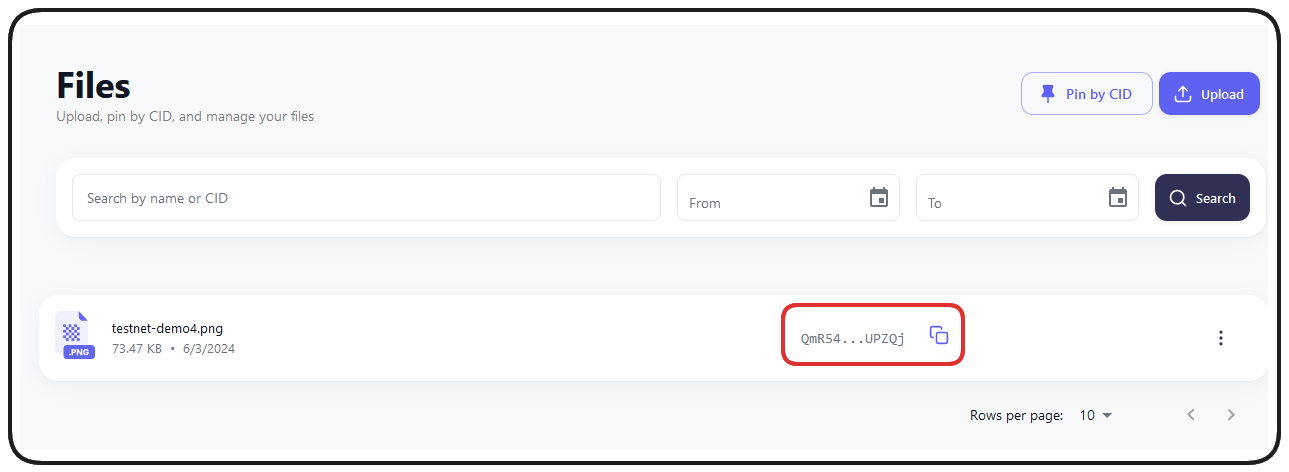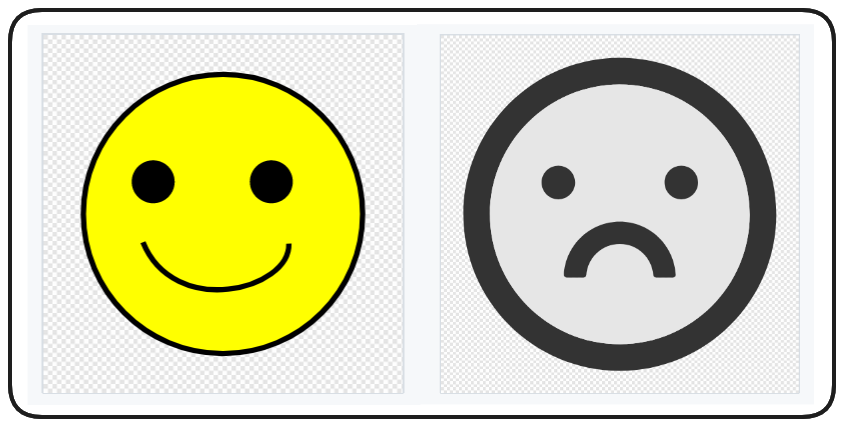5/5
_Follow along the course with this video._ --- ### The issue with IPFS vs HTTPS In this lesson we'll discuss two ways we can reference our data in `IPFS` and ways we can strengthen the hosting of it to ensure it's always made available. First things first: Let's discuss the **InterPlanetary File System (IPFS)** and the pros and cons associated with it. ### IPFS We learnt previously that there are two ways to reference the location of data hosted by `IPFS`. We can point directly to the `IPFS` network with the syntax `ipfs://<CID>` _or_ we can use the `IPFS Gateway` and point to an IPFS server via `https://ipfs.io/ipfs/<CID>`. There are some important considerations to keep in mind here. If we decide to use the `IPFS Gateway`, this is essentially pointing to a website hosted on a server by `IPFS`. If this website or server goes down for any reason the data we're pointing to will be unretrievable! Imagine losing the art of your NFT forever! A safer methodology is pointing to the `IPFS` network directly, but this comes with caveats. While the URI is pointing to a decentralized network, assuring the data is accessible so long as a node is still hosting it, most browsers and services don't natively support interfacing with the `IPFS` network. This can make viewing and interacting with your NFT cumbersome. In addition to the above, the `IPFS` network doesn't automatically distribute all data amongst all nodes on the network (like a blockchain would). Instead it relies on nodes pinning the data they find valuable to assure it's available to the rest of the network. If I'm the only person pinning my data on `IPFS`, I'm not any more decentralized than using the `IPFS Gateway`. **_So, how do we solve this?_** ### Pinning Services Fortunately, there are services available which developers can use to pin their data for them, decentralizing access to it. One such service is [**Pinata.cloud**](https://www.pinata.cloud/).  Once an account is created and you've logged in, the UI functions much like an `IPFS` node and you can simply upload any files you want the service to pin on your behalf.  Once uploaded, `Pinata` will provide a `CID`, just like `IPFS` itself will.  > ❗ **PROTIP** > Whenever I work on a project, I will upload my images/data both to my local `IPFS` node as well as `Pinata` to assure the data is always pinned _somewhere_. ### Wrap Up So, in summary, pointing to the `IPFS Gateway`, not great. Pointing to the `IPFS` network itself is a little better and more decentralized, but comes with it's own issues. What if I told you there's an even better way to store our images? In the next lesson we'll discuss `Scalable Vector Graphics`, or `SVGs` and how images of this type can be stored _on-chain_ making them permanently accessible! See you there! 
Follow along the course with this video.
The issue with IPFS vs HTTPS
In this lesson we'll discuss two ways we can reference our data in IPFS and ways we can strengthen the hosting of it to ensure it's always made available.
First things first: Let's discuss the InterPlanetary File System (IPFS) and the pros and cons associated with it.
IPFS
We learnt previously that there are two ways to reference the location of data hosted by IPFS. We can point directly to the IPFS network with the syntax ipfs://<CID> or we can use the IPFS Gateway and point to an IPFS server via https://ipfs.io/ipfs/<CID>.
There are some important considerations to keep in mind here. If we decide to use the IPFS Gateway, this is essentially pointing to a website hosted on a server by IPFS. If this website or server goes down for any reason the data we're pointing to will be unretrievable!
Imagine losing the art of your NFT forever!
A safer methodology is pointing to the IPFS network directly, but this comes with caveats. While the URI is pointing to a decentralized network, assuring the data is accessible so long as a node is still hosting it, most browsers and services don't natively support interfacing with the IPFS network. This can make viewing and interacting with your NFT cumbersome.
In addition to the above, the IPFS network doesn't automatically distribute all data amongst all nodes on the network (like a blockchain would). Instead it relies on nodes pinning the data they find valuable to assure it's available to the rest of the network. If I'm the only person pinning my data on IPFS, I'm not any more decentralized than using the IPFS Gateway.
So, how do we solve this?
Pinning Services
Fortunately, there are services available which developers can use to pin their data for them, decentralizing access to it. One such service is Pinata.cloud.

Once an account is created and you've logged in, the UI functions much like an IPFS node and you can simply upload any files you want the service to pin on your behalf.

Once uploaded, Pinata will provide a CID, just like IPFS itself will.

❗ PROTIP
Whenever I work on a project, I will upload my images/data both to my localIPFSnode as well asPinatato assure the data is always pinned somewhere.
Wrap Up
So, in summary, pointing to the IPFS Gateway, not great. Pointing to the IPFS network itself is a little better and more decentralized, but comes with it's own issues. What if I told you there's an even better way to store our images?
In the next lesson we'll discuss Scalable Vector Graphics, or SVGs and how images of this type can be stored on-chain making them permanently accessible!
See you there!

IPFS and Pinata vs HTTP vs on chain SVGs
A foundational introduction to SVG Fundamentals for On-Chain NFTs - Explore Scalable Vector Graphics (SVGs), understanding their XML-based format and inherent scalability compared to raster images. See how SVGs can be Base64 encoded into Data URIs for on-chain NFT metadata, paving the way for dynamic, contract-controlled visuals.
Previous lesson
Previous
Next lesson
Next
Course Overview
About the course
What you'll learn
Advanced smart contract development
How to develop a stablecoin
How to develop a DeFi protocol
How to develop a DAO
Advanced smart contracts testing
Fuzz testing
Manual verification
Course Description
Who is this course for?
- Engineers
- Smart Contract Security researchers
Potential Careers
Web3 Developer Relations
$85,000 - $125,000 (avg. salary)
Web3 developer
$60,000 - $150,000 (avg. salary)
Smart Contract Engineer
$100,000 - $150,000 (avg. salary)
Smart Contract Auditor
$100,000 - $200,000 (avg. salary)
Security researcher
$49,999 - $120,000 (avg. salary)
Meet your instructors
Web3 engineer, educator, and Cyfrin co-founder. Patrick's smart contract development and security courses have helped hundreds of thousands of engineers kickstarting their careers into web3.
Guest lecturers:
Last updated on November 7, 2025
Duration: 36min
Duration: 3h 06min
Duration: 5h 02min
Duration: 6h 02min
Duration: 2h 47min
Duration: 1h 23min
Duration: 4h 28min
Duration: 1h 19min
Duration: 1h 10min
Course Overview
About the course
What you'll learn
Advanced smart contract development
How to develop a stablecoin
How to develop a DeFi protocol
How to develop a DAO
Advanced smart contracts testing
Fuzz testing
Manual verification
Course Description
Who is this course for?
- Engineers
- Smart Contract Security researchers
Potential Careers
Web3 Developer Relations
$85,000 - $125,000 (avg. salary)
Web3 developer
$60,000 - $150,000 (avg. salary)
Smart Contract Engineer
$100,000 - $150,000 (avg. salary)
Smart Contract Auditor
$100,000 - $200,000 (avg. salary)
Security researcher
$49,999 - $120,000 (avg. salary)
Meet your instructors
Web3 engineer, educator, and Cyfrin co-founder. Patrick's smart contract development and security courses have helped hundreds of thousands of engineers kickstarting their careers into web3.
Guest lecturers:
Last updated on November 7, 2025







